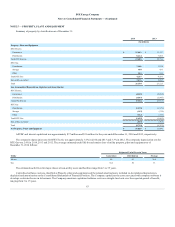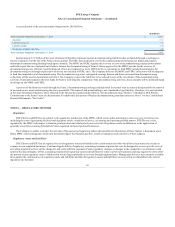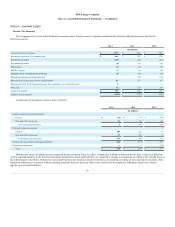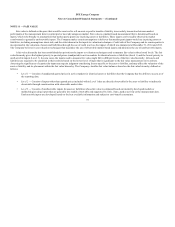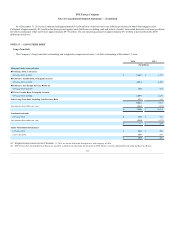DTE Energy 2014 Annual Report Download - page 76
Download and view the complete annual report
Please find page 76 of the 2014 DTE Energy annual report below. You can navigate through the pages in the report by either clicking on the pages listed below, or by using the keyword search tool below to find specific information within the annual report.
Fair value is defined as the price that would be received to sell an asset or paid to transfer a liability in an orderly transaction between market
participants at the measurement date in a principal or most advantageous market. Fair value is a market-based measurement that is determined based on
inputs, which refer broadly to assumptions that market participants use in pricing assets or liabilities. These inputs can be readily observable, market
corroborated or generally unobservable inputs. The Company makes certain assumptions it believes that market participants would use in pricing assets or
liabilities, including assumptions about risk, and the risks inherent in the inputs to valuation techniques. Credit risk of the Company and its counterparties is
incorporated in the valuation of assets and liabilities through the use of credit reserves, the impact of which was immaterial at December 31, 2014 and 2013.
The Company believes it uses valuation techniques that maximize the use of observable market-based inputs and minimize the use of unobservable inputs.
A fair value hierarchy has been established that prioritizes the inputs to valuation techniques used to measure fair value in three broad levels. The fair
value hierarchy gives the highest priority to quoted prices (unadjusted) in active markets for identical assets or liabilities (Level 1) and the lowest priority to
unobservable inputs (Level 3). In some cases, the inputs used to measure fair value might fall in different levels of the fair value hierarchy. All assets and
liabilities are required to be classified in their entirety based on the lowest level of input that is significant to the fair value measurement in its entirety.
Assessing the significance of a particular input may require judgment considering factors specific to the asset or liability, and may affect the valuation of the
asset or liability and its placement within the fair value hierarchy. The Company classifies fair value balances based on the fair value hierarchy defined as
follows:
•Level 1 — Consists of unadjusted quoted prices in active markets for identical assets or liabilities that the Company has the ability to access as of
the reporting date.
•Level 2 — Consists of inputs other than quoted prices included within Level 1 that are directly observable for the asset or liability or indirectly
observable through corroboration with observable market data.
•Level 3 — Consists of unobservable inputs for assets or liabilities whose fair value is estimated based on internally developed models or
methodologies using inputs that are generally less readily observable and supported by little, if any, market activity at the measurement date.
Unobservable inputs are developed based on the best available information and subject to cost-benefit constraints.
73


